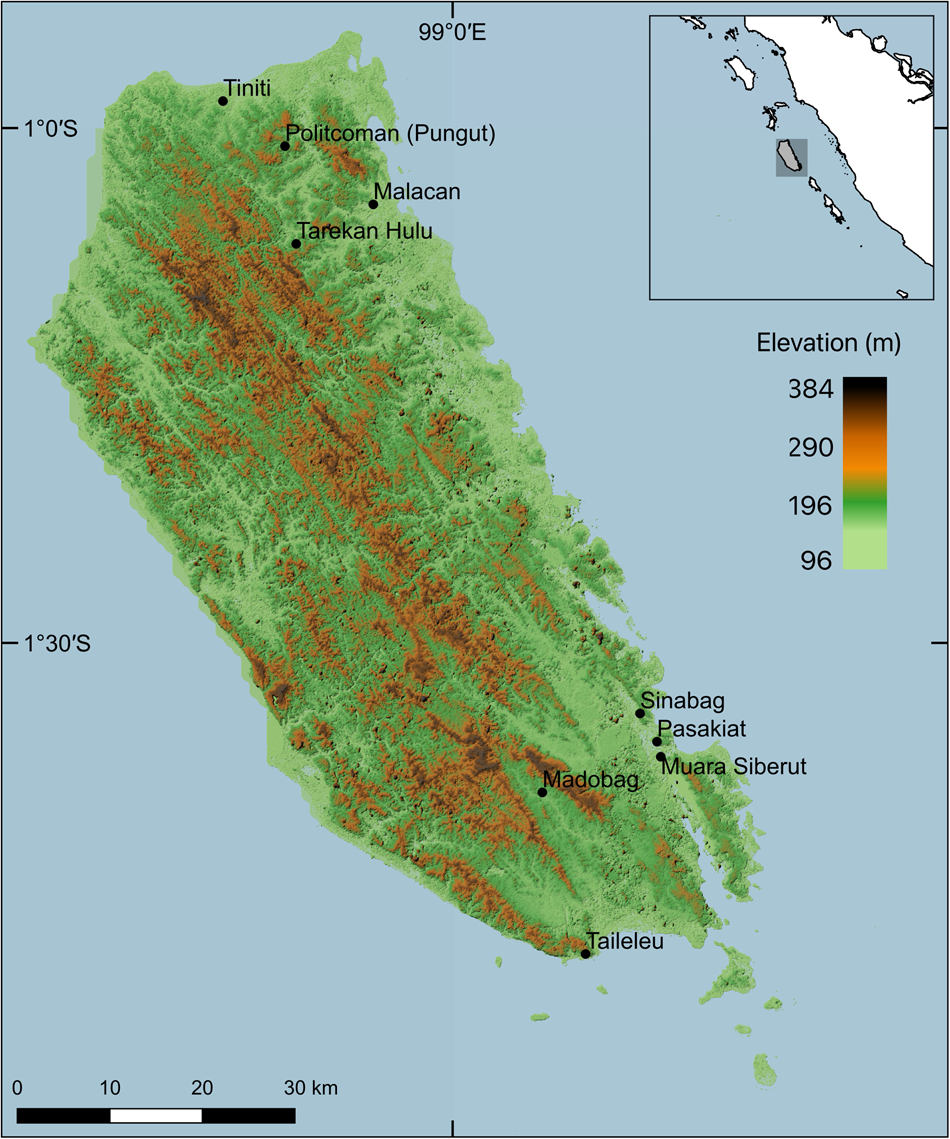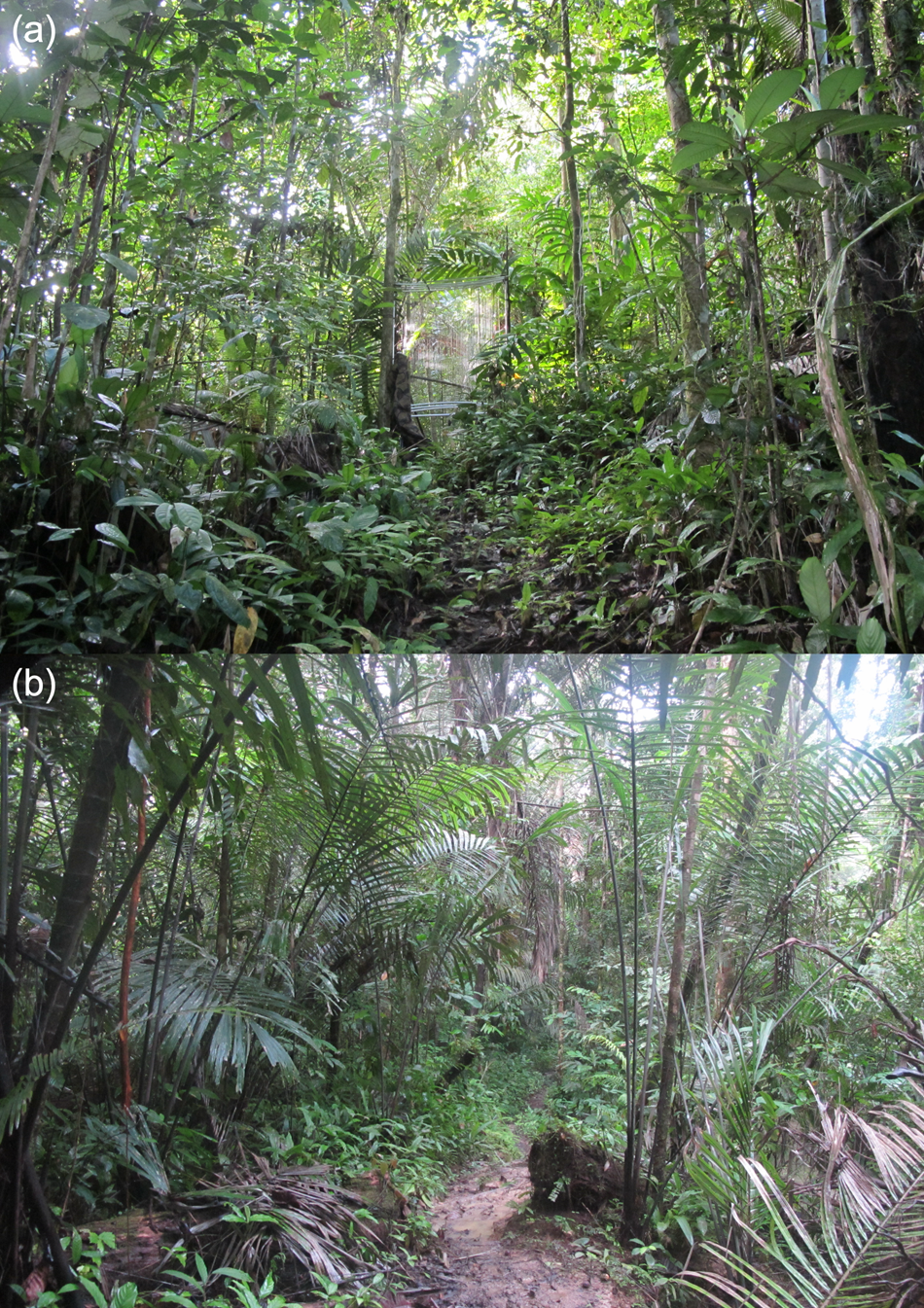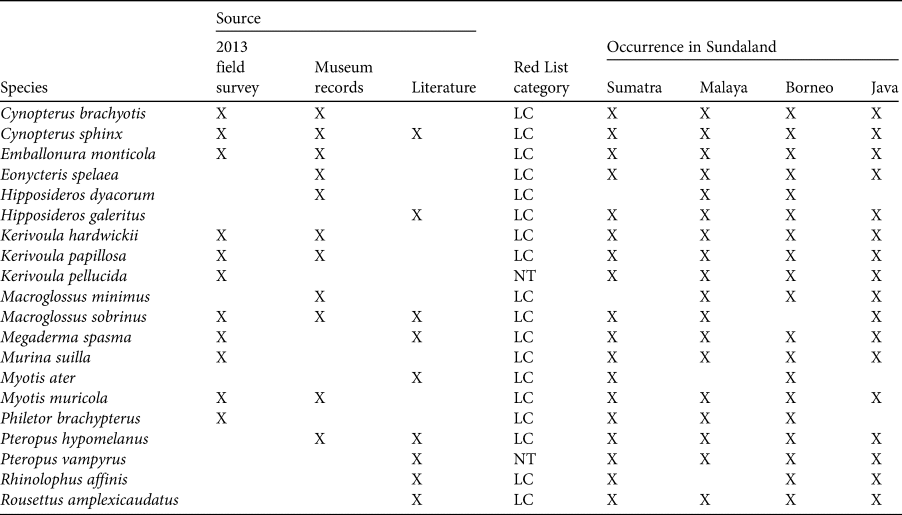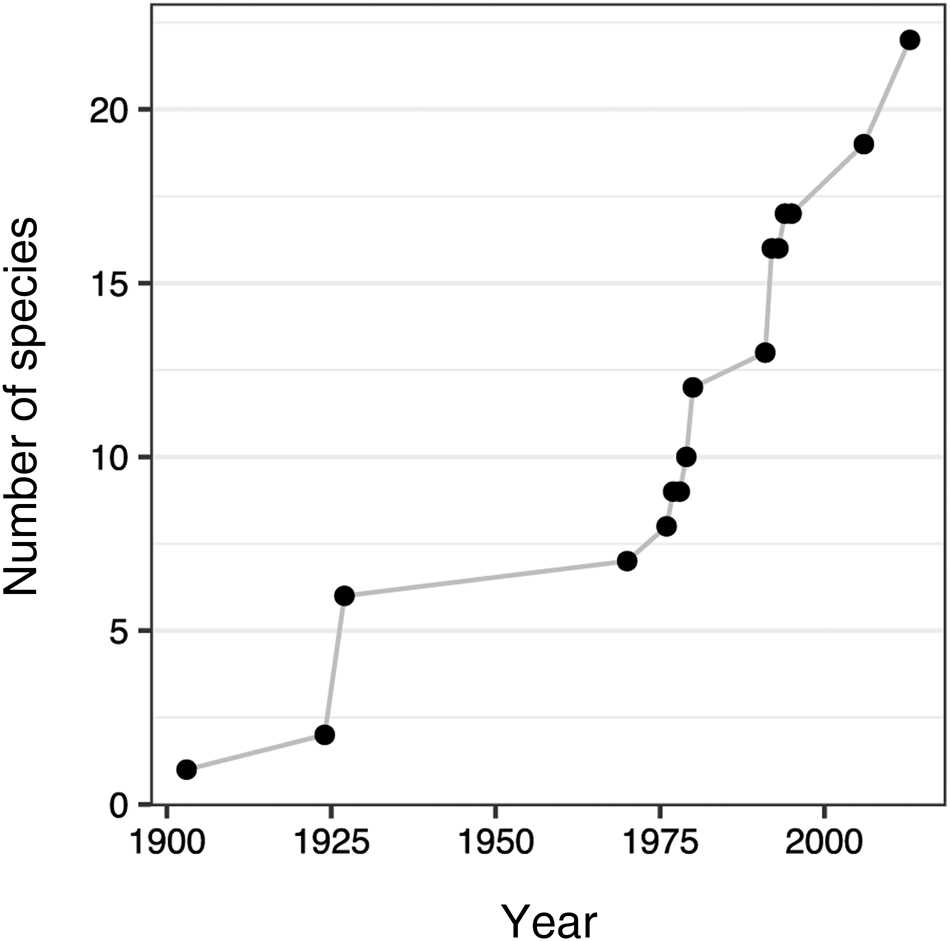Biodiversity in areas of emerging economic growth in South-east Asia is under threat from habitat degradation, and the impact is potentially greater for small islands. One such island is Siberut in the Mentawai archipelago off the coast of Sumatra, Indonesia, well known for its high number of endemic primates and recognized as a Biosphere Reserve in 1981 (UNESCO, 2015). Logging concessions, however, have been threatening the island's forests since the late 1990s (Darmanto & Setyowati, Reference Darmanto and Setyowati2012), reducing total forest cover and the populations of endemic primates (Whittaker, Reference Whittaker2006). In assessing the state of biodiversity on Siberut and similar islands, all available sources of information need to be examined, including from historical expeditions now available through online databases, hereafter referred to as natural history collections (Graham et al., Reference Graham, Ferrier, Huettman, Moritz and Peterson2004).
Siberut has a high density of endemic species relative to its size. The island's biodiversity is relatively distinct compared to adjacent islands (WWF, 1980), possibly a result of its isolation from the Sundaland mainland for the last 500,000 years, even when sea level was at its lowest (Voris, Reference Voris2000). Conservation recommendations for the island continue to rely on relatively old grey literature (e.g. WWF, 1980) and research published in the early 2000s (e.g. Whittaker, Reference Whittaker2005, Reference Whittaker2006; Quinten et al., Reference Quinten, Waltert, Syamsuri and Hodges2010) that focused on primates. There are five types of forest on Siberut, each with unique communities (Meyers et al., Reference Meyers, Pio, Rachmania and Hernandez2006; Quinten et al., Reference Quinten, Waltert, Syamsuri and Hodges2010). Surveying the whole island is challenging. Despite being generally flat with a maximum altitude of 384 m, most of the 4,080 km2 is criss-crossed by meandering watercourses fed by c. 4,000 mm of annual rainfall, with daily temperatures of 22–31 °C and no dry season (WWF, 1980). The humid hills and ridges are difficult to access on foot, and the inhabitants use motorboats to travel by river or along the coast.
We collated data from Museum Zoologicum Bogoriense, early 20th century accounts (Lyon, Reference Lyon1916; Chasen & Kloss, Reference Chasen and Kloss1927), grey literature (WWF, 1980), systematic reviews (Corbet & Hill, Reference Corbet and Hill1992), and online databases that were last updated in 2018, searched in 2020 (Constable et al., Reference Constable, Guralnick, Wieczorek, Spencer, Peterson and Committee2010; Natural History Museum, 2014; National Museum of Natural History, Smithsonian Institution, 2015; Western Australian Museum, 2018; GBIF.org, Reference org2020; Supplementary Table 1). We only included records for which the year was available. Where geographical coordinates were not available, we estimated them using an administrative map (Darmanto & Setyowati, Reference Darmanto and Setyowati2012) and web portal (GeoNames, Reference GeoNames2016).
In addition, we conducted a bat survey around Pungut Field Station, north Siberut, during September–October 2013 for a total of 58 trapping nights on two transects (Fig. 1) that represented hilly (Plate 1a) and riverine areas (Plate 1b). We used four-bank harp traps and mist nets (6 × 9 m, mesh size 30–32 mm) following a standard bat survey protocol (Kingston, Reference Kingston, Kunz and Parsons2009) but with the checking of mist nets extended by 30 minutes because of the low capture rate (mean 4.88 ± SE 0.80 individuals per night). We also used non-standard placement of stacked mist nets around the Station's buildings and over a river, and examined bats hand-captured by local people. Bats were immediately released at their capture location after measurement, with identification based on Suyanto (Reference Suyanto2001). Using the collated data set from natural history collections, earlier published accounts, and our survey, we plotted a species accumulation curve, and compared our collated bat species list for Siberut with that for adjacent Sundaland landmasses (Sumatra, Malaysian Peninsula, Java and Borneo), available in Maryanto et al. (Reference Maryanto, Maharadatunkamsi, Achmadi, Wiantoro, Sulistyadi and Yoneda2019).

Fig. 1 Siberut island, one of the Mentawai Islands in Indonesia, indicating the nine localities (including our survey at Pungut Field Station) where bats were recorded during 1903–2013 (Table 1).

Plate 1 Characteristic forests of (a) the hilly areas and (b) the riverine areas around Pungut Field Station (Fig. 1).
We obtained records of 11 species of bats from natural history collections and nine species from earlier literature, and in our field survey we recorded 138 bats of 11 species (Supplementary Table 2). This resulted in a total of 20 bat species, three of which were new records from our field survey (Table 1). Of the 11 species of bats we recorded at Pungut Field Station, five were caught in mist nets and six in harp traps (Supplementary Fig. 1). Species richness estimators (Supplementary Material 1) indicated no additional species are likely to be found using mist nets and harp traps with a standard ground-sampling protocol. All 20 species occur in other parts of Sundaland (Table 1). Information on locations within Siberut was not available for five species (Supplementary Table 3) but the records for which locality data are available show that previous inventories were from a total of eight locations, excluding our survey, in the south and north (Fig. 1, Supplementary Table 3).
Table 1 Collated list of bat species recorded at nine locations on Siberut (Fig. 1), compiled from records spanning 1903–2017, from our 2013 field survey at Pungut Field Station, natural history collections and literature (see text for details), with IUCN Red List category (IUCN, 2020) and known distribution on the adjacent land masses of Sundaland.

Eleven species of bats in a mixed forest habitat is within the expected number of species considering inventories in similar settings with longer sampling periods (e.g. Wiantoro et al., Reference Wiantoro, Hitch, Engilis, Gunawan and Engilis2017). However, when we consider accounts of bat species found on Siberut in the past, from records of natural history collections (Supplementary Table 2), there is a steep species accumulation curve (Fig. 2), suggesting more bat species could be found with additional survey methods. Philetor brachypterus, recorded for the first time in our 2013 survey, for example, was captured using a non-standard method (stacked mist nets above a river). The other two new species records were obtained with harp traps, which have been available only from 1958 (Constantine, Reference Constantine1958). Although biodiversity data from earlier field research may provide biased information of species assemblages because of the subjective interests of past collectors, such data is nevertheless useful for directing sampling in previously unsurveyed areas (Graham et al., Reference Graham, Ferrier, Huettman, Moritz and Peterson2004).

Fig. 2 Species accumulation curve for records of bat species collated from our field survey, natural history collections and literature.
Although eighteen of the 20 bat species so far recorded on Siberut are categorized on the IUCN Red list (IUCN, 2020) as Least Concern (Table 1), they are not necessarily less prone to extinction than threatened species (Tanalgo & Hughes, Reference Tanalgo and Hughes2018). Neither bats on oceanic islands (Scanlon et al., Reference Scanlon, Petit and Bottroff2014) nor those on islands near larger landmasses (Lane et al., Reference Lane, Kingston and Lee2006) are exempt from local extinction. Systematic biodiversity monitoring on small islands such as Siberut can indicate whether recent human activities, such as the logging concessions that were ongoing until at least 2018 (Saleleubaja et al., Reference Saleleubaja, Sanene and Sagurung2021), contribute to local extinction. Considering the importance of small tropical islands such as Siberut for conservation, even outside protected areas, they should not be overlooked in either regional or global conservation efforts.
Acknowledgements
Part of this work was conducted by SGA under the supervision of SN and DTI. Financial support for the field work in northern Siberut was provided by the Siberut Conservation Programme, a collaborative project between the German Primate Centre and Bogor Agriculture University. We thank Risel, Piator, Linda, Potan, Dwi Yandhi Febriyanti, Edith Sabara, and Agung Imansyah Albaar of the Siberut Conservation Programme for logistical and administrative support; the villagers of Politcoman for providing hospitality and information; the Wildlife Conservation Society for the loan of harp traps; and Kurnianingsih, Nanang, and Maharadatunkamsi of Museum Zoologicum Bogoriense for providing data. We acknowledge the input of the late Tony Whitten to the study of the biodiversity of Siberut Island; the participants of Island Biology 2016 in interpreting species presence data from island ecosystems; and the 2015 Writing for Conservation workshop of the Conservation Leadership Programme. Figure 1 was drafted with a digital elevation model provided by ASTER GDEM, a product of METI and NASA.
Author contributions
Study design: SGA, SN, DTI, fieldwork: SGA, SN; museum data collection: SGA, SW; data analysis, writing: all authors.
Conflicts of interest
None.
Ethical standards
All animal handling in this study followed the Guidelines of the American Society of Mammologists for the Use of Wild Mammals in Research (2007), and this research otherwise abided by the Oryx guidelines on ethical standards.








